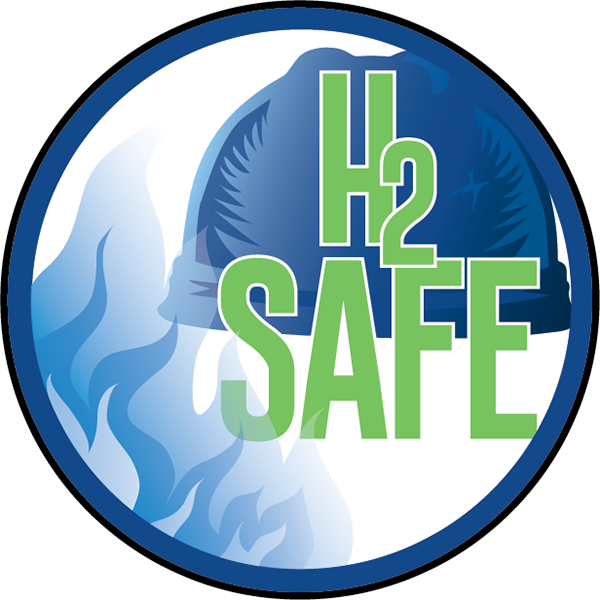H2 Safe

Fueling the future demands safety know-how.
As the EERC leads the charge in establishing a groundbreaking hydrogen hub in the Midwest, we recognize the pressing need for comprehensive safety and emergency responder protocols.
Although misperceptions exist about hydrogen safety, the truth is that it is generally as safe or safer than hydrocarbons. Hydrogen is nontoxic, and in the unlikely event of a leak, it will simply diffuse into the atmosphere. The petroleum-refining and ammonia- and methanol-manufacturing industries have handled hydrogen safely for decades, meaning that the issues are not insurmountable.
With the right preparedness, hydrogen is as safe as gasoline, diesel, natural gas, and other traditional fuels.
Clean-Burning Fuel
Hydrogen is, of course, flammable. Hydrogen burns with a pale blue flame that is nearly invisible in sunlight, which complicates detecting small flames. Hydrogen is a clean-burning fuel; a pure hydrogen flame will not produce smoke. When it is combined with oxygen, hydrogen produces heat, with only water vapor as a by-product.
Clean hydrogen fires have low radiant heat, so you cannot sense the presence of a
flame until you are
very close to it (or even in it).
Hydrogen- vs. Gasoline-Fueled Fire
The photos below are from video of fires caused by a fuel tank leak in a hydrogen-fueled vehicle (left) and a fuel line leak in a gasoline-fueled vehicle (right). At the time of this photo (60 seconds after ignition), the hydrogen flame has begun to subside, while the gasoline fire is intensifying. After 100 seconds, all of the hydrogen is gone, and the car's interior is undamaged. The maximum temperature inside the back window was only 67°F. The gasoline-fueled car continued to burn for several minutes and was completely destroyed.
Swain, M.R. Fuel Leak Simulation. 2001

